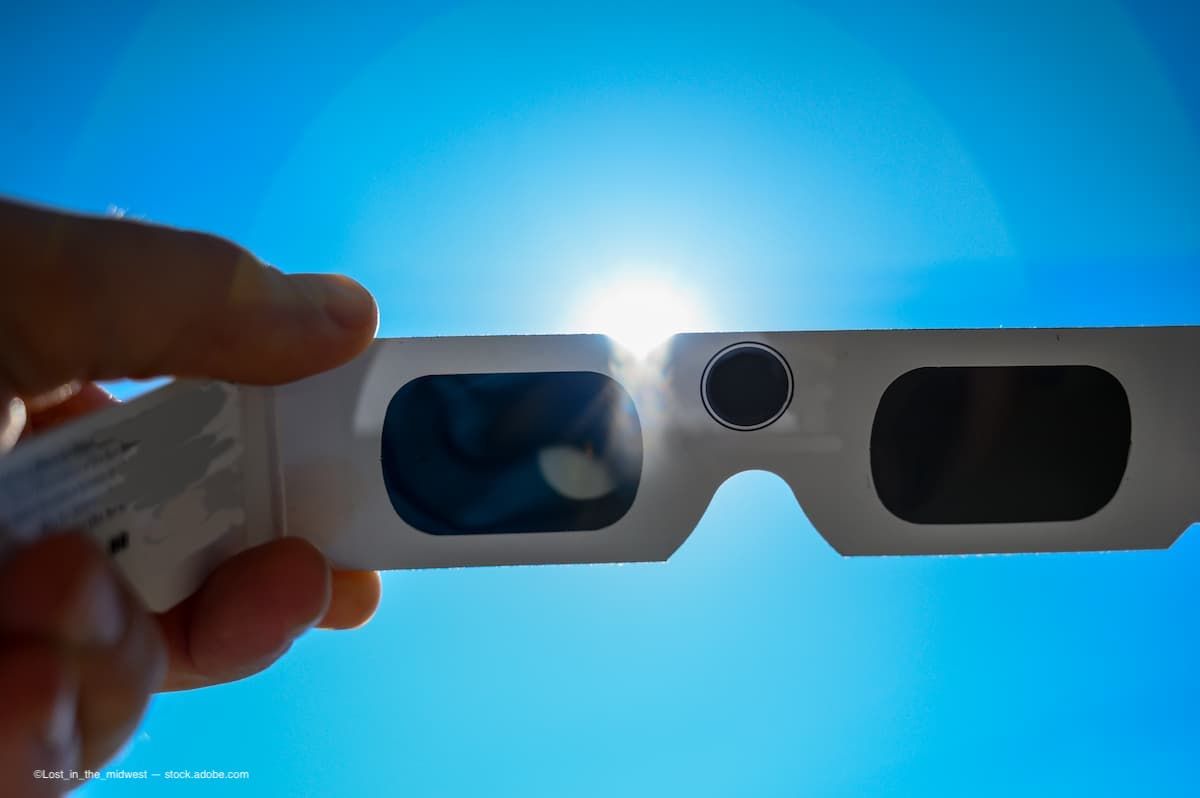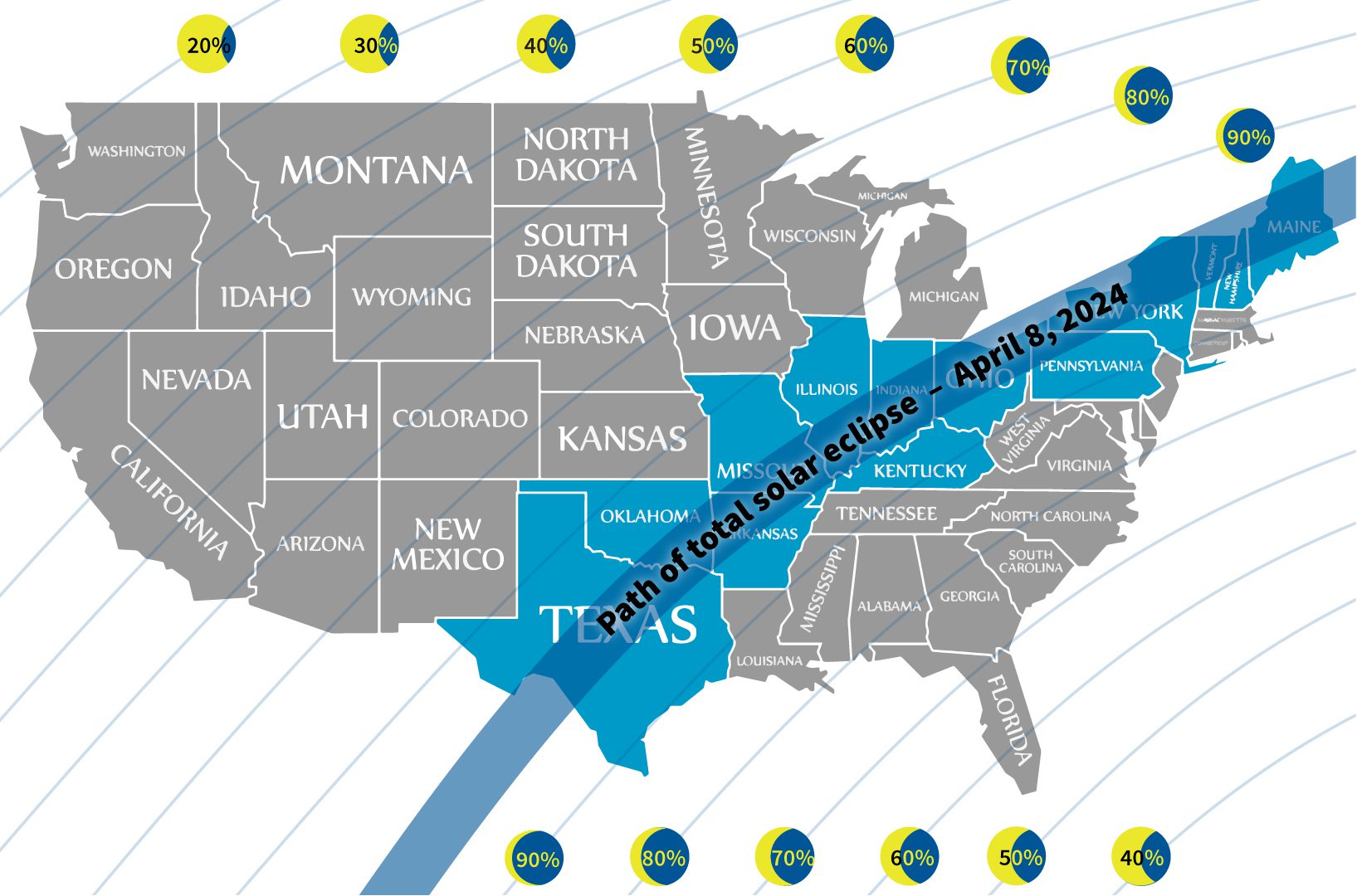States in the path of totality
- Texas
- Oklahoma
- Arkansas
- Missouri
- Illinois
- Kentucky
- Indiana
- Ohio
- Pennsylvania
- New York
- Vermont
- New Hampshire
- Maine
- Smaller parts of Michigan and Tennessee.
News
Article
Author(s):
The organization aims to educate viewers of dangers and safety precautions ahead of the eclipses.
(Image Credit: AdobeStock/Lost_in_the_midwest)

Prevent Blindness launched the Prevent Blindness Eclipse + Your Eyes program to get ready for the upcoming solar eclipse viewable in the United States.
The goal of the program is “to educate the public on solar eclipses and raise awareness about the dangers of looking directly at the sun during an eclipse,” according to a press release from the organization.1
Jeff Todd, President and CEO at Prevent Blindness described why the organization is striving to educate viewers on the dangers of viewing a solar eclipse incorrectly.
“During the last viewable eclipse in 2017, 215 million adults watched the event, but only 72% of people used eclipse glasses due to short supply,” said Todd. “We are out to change that for these eclipses by advocating that 100% of viewers wear eye protection to view these awe-inspiring natural phenomena.”
Failure to protect the eyes while looking at the sun during a solar eclipse can result in “eclipse blindness” or solar retinopathy, causing damage or destruction to the cells in the retina, according to the organization. Distorted vision and altered color vision are among some of the other symptoms, according to Prevent Blindness.
The organization also stresses that the only time it is safe to view an eclipse without eye protection is during a total solar eclipse, the part of the solar eclipse where the moon completely covers the sun. If viewing a partial eclipse one must wear eye protection or risk damaging the eyes. Even during a total eclipse, when the moon moves away from blocking the sun, it is possible to get a solar burn on your retina without the proper protection, which can cause permanent damage to your eye.
Prevent Blindness listed the ways it is safe for viewers to watch a solar eclipse including:2
While there are ways to safely view the eclipse, Prevent Blindness also listed the common ways people view the eclipse that may be harmful:2
Mike Massimino, PhD, a retired NASA physicist described the importance of proper eye protection in the press release from Prevent Blindness.
“Eclipse events are a reminder to us all of the incredible beauty and science behind our solar system,” said Massimino. “When the moon moves between the sun and the earth, it obstructs the sun’s light from reaching the earth, casting a shadow on its surface and creating a solar eclipse. Seeing an eclipse is breathtaking and exhilarating, but it can be dangerous if you are not correctly protecting your eyes. Everyone should witness a solar eclipse, but, bottom line, you need to use protective eyewear.”
The eclipse will be viewable from most of the United States. (Image Credit: Prevent Blindness)

The total solar eclipse in North America will occur on April 8, 2024 across most of the US, with a “small band of total solar eclipse stretching from east to west across much of the continent.” Another total eclipse will not be viewable in the US until 2045.
Don’t miss out—get Ophthalmology Times updates on the latest clinical advancements and expert interviews, straight to your inbox.